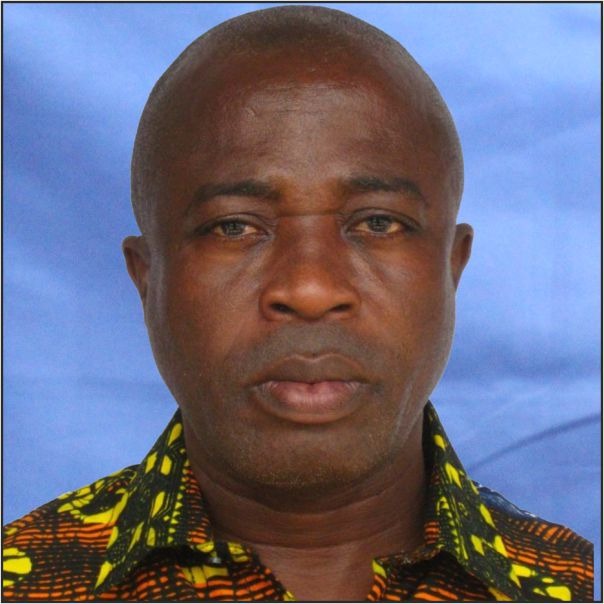Population Size, Growth Rate and Sex Ratio
The total population of the municipality, according to the 2010 Population and Housing Census was 76,895, with an annual growth rate of 1.6%. The Census revealed that 51.8%of the people in the municipality were female and 48.2% were male, an indication of the presence of more females than males. The projected population of the municipality for 2014 is 81,977.
Spatial Distribution of Population
Population Density and Distribution
The municipality has a population density of 131 persons per sq. km. The figure is lower than the regional figure of 196 persons per sq. km, but lower than national figure of 103.4 persons per sq.km.
Rural- Urban Split
There about 73 settlements in the municipality Abofour and Offinso New Town are the only urban settlements. The rest are rural, since each of them have population less than 5000. The population for the two major towns in the Municipality namely Offinso and Abofour are 15,177 and 13,761 respectively.
In all about 64.1% of the population live in rural areas, whiles 35.9% live in urban areas. The fact that about 97% of the settlements in the municipality are rural poses serious challenge in the distribution of high order services and functions. Services must have the required threshold population before they are provided. The implication therefore is that theoretically many of the settlements do not qualify for higher order services.
It is therefore important for the Municipal Assembly to put in place strategies that will ensure proper planning and management of the urban situation and also provide the needed infrastructure and services for the orderly growth of rural settlements.
Age and Sex Composition
The age structure of the population in the municipality is skewed towards the youth. The highest proportions are in the Age groups 0-4 years (15.5%) and 5-9 years (15.8%). Cumulatively, 41.8% of the population in the municipality is below 15 years. This coupled with a 4.6% population above 64 years means a high potential demand for basic school infrastructure, teachers, learning materials, health infrastructure, health personnel, drugs, health equipment and other social facilities.
There is therefore the need to put in place programmes and projects that would provide employment opportunities for this employable population and also inspire the youth to initiate, create and develop products which individuals and society require. The detailed age and sex structure of the municipality is presented in Table 6 below.
Dependency Ratio
The dependent population (0-below 15 and 65 and above years) is the proportion of people catered for by those working or in the employable ages (15-64 years). The dependent population constitutes 46.4% of the total population of the municipality. The dependency ratio for Offinso Municipality is 86. This implies one productive worker in the municipality supports one other dependent or non-worker. This is higher than the national ratio of 76. The real dependency burden may be higher since the employable ages include the unemployed and those in school/acquiring skills. Measures are required to create employment opportunities and to improve income levels so as to enable the employable population cater for themselves and their dependents.
Migration
Migration towards the urban centres is causing lower densities in some rural areas. It is also evident that most people commute from the Municipality to look for jobs in Kumasi. The migration of people from the rural areas to the urban centres in search of non-existing jobs increases the already unemployment and reduces agricultural productivity and income.
Household Size and Characteristics
The average household size is 5.0. The composition comprises persons from the nuclear family, extended family and persons outside the extended families. Heads of the households are mainly male. In the other households where females are heads, it is either single or single parent household.
Religious Affiliation
Christianity is the dominant religion in the municipality (61.5%), Islam (27.0%), Traditional Religion (2.7%), Other Religion (0.6%) and No Religion (8.2%). There is cordiality among the religious groups and this situation provides a good environment for the development of the municipality.
Spatial Analysis
This section gives the main spatial organization issues in the municipality.
Nature and Distribution of Settlements
The municipality has 73 settlements. Offinso and Abofour are the only urban settlements, with population 5,000 and above. About 35.9% of the population of the municipality in 2013 lived in these 2 urban settlements. About 64.1% of the population lives in 71 settlements with population below 5000. This situation requires the selection and application of appropriate water, health, sanitation and other infrastructure systems and technology choice to address the rural and urban facility and service needs.
Settlement Planning and Management
All lands in the Municipality belong to the stools and are therefore controlled by the chiefs and their elders. The Department of Town and Country Planning is the key institution responsible for facilitation and co-ordination of spatial development in the municipality.
Settlement planning, though a municipal-wide activity, it is concentrated in the Municipal Capital (Offinso) and its immediate environs. Even in the municipal capital, some areas have no layouts. Currently, the municipality has thirteen (13) approved layouts. The layouts are tools for ensuring orderly physical development in the municipality.
Apart from inadequate layouts, many developments do not conform to approved layouts. There is low public awareness and weak monitoring and enforcement of legislations/byelaws on physical development. In addition the Physical Planning Department is under resourced. The department lacks modern physical planning and management equipment and has no means of transport. These have resulted in non-compliance and unauthorized erection of physical structures in the communities. Land for the provision of public facilities is almost non-existent in the municipality due largely to lack of proper land use planning and encroachments.
There is therefore the need for the Municipal Assembly to effectively collaborate with the traditional authorities and to also provide adequate funding for the preparation and management of structure plans and layouts to guide proper settlement development and to reduce haphazard, uncontrolled and uncoordinated development in the municipality.
Date Created : 4/5/2019 2:54:35 AM






 facebook
facebook twitter
twitter Youtube
Youtube TOLL FREE 0800 430 430
TOLL FREE 0800 430 430 +233 593 831 280
+233 593 831 280 GPS: GE-231-4383
GPS: GE-231-4383 info@ghanadistricts.com
info@ghanadistricts.com Box GP1044, Accra, Ghana
Box GP1044, Accra, Ghana